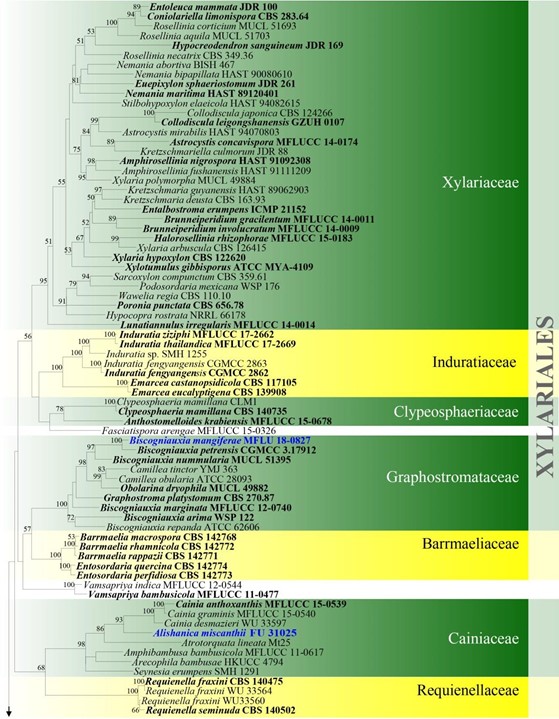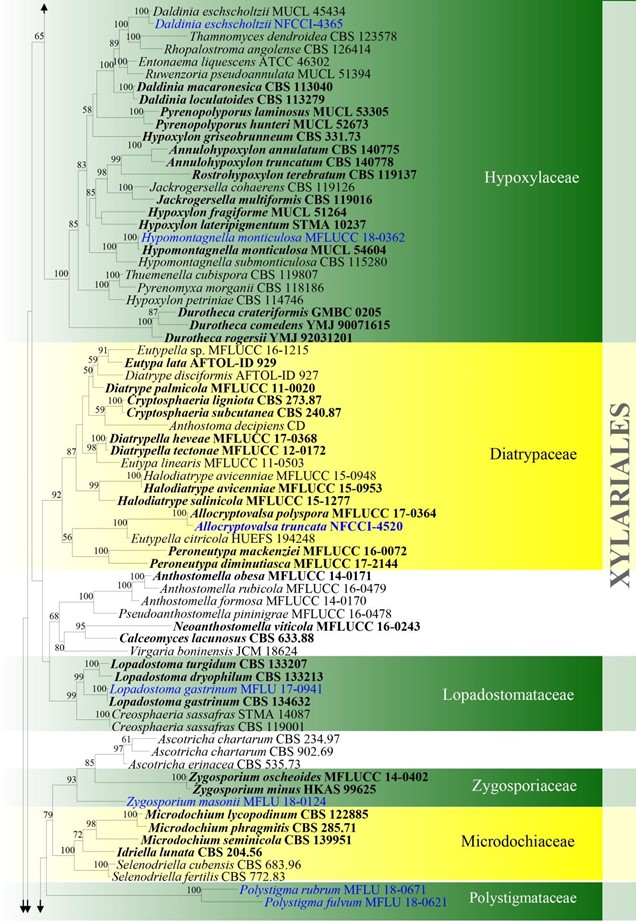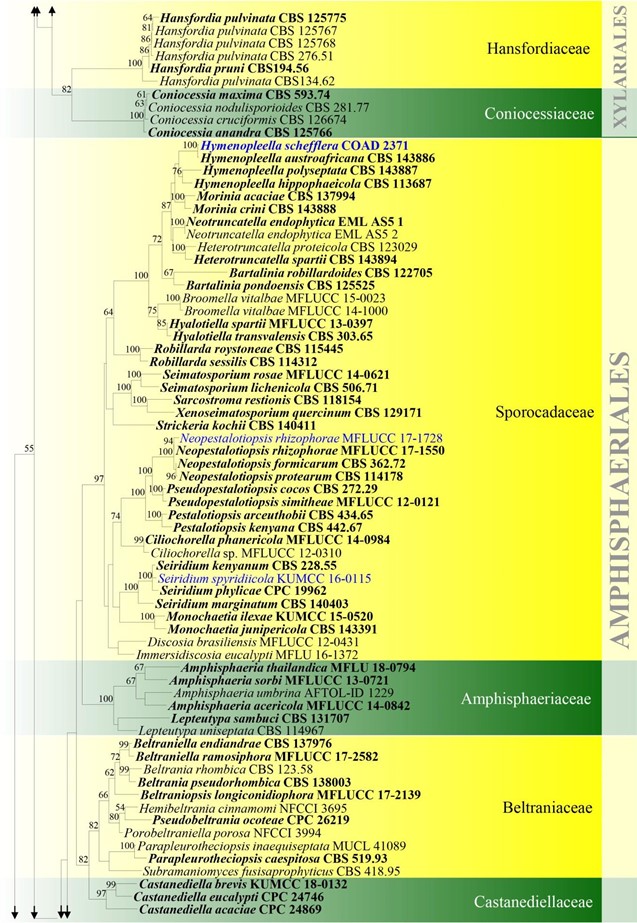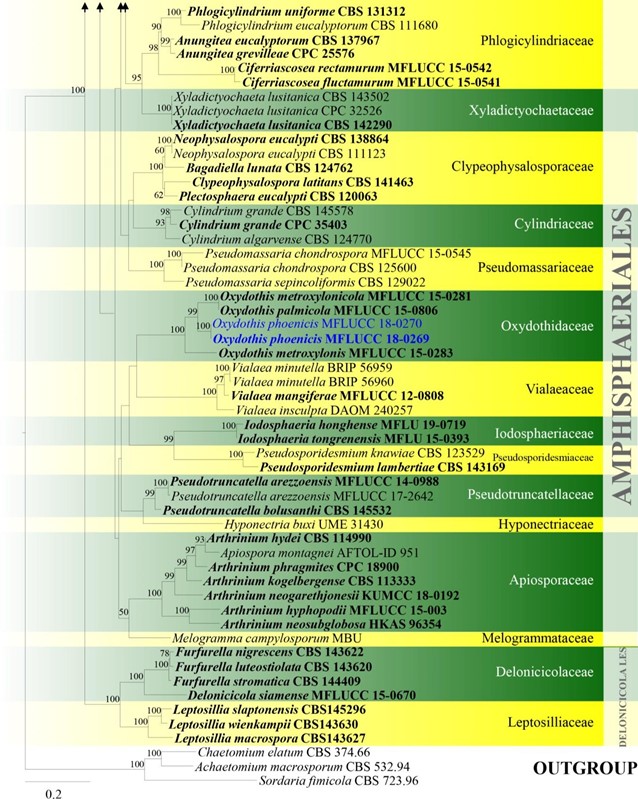Alishanica Karun., C.H. Kuo & K.D. Hyde, gen. nov.
MycoBank number: MB 556756; Index Fungorum number: IF 556756; Facesoffungi number: FoF 06335;1 species with sequence data.
Etymology: – The specific epithet reflects the name of Ali Mountain from where the species was collected.
Saprobic on dead sheaths of Miscanthus sinansis (Poaceae). Sexual morph: Ascomata immersed beneath blackened aggregated clypeus on the surface of dead sheath, loosely aggregated or rarely solitary; dark brown to black, globose to subglobose, slightly depressed, uniloculate with distinct centrally erumpent ostiole with periphyses, surrounded by distinct, shiny, black flanges the tissue spreading down along the papilla. Peridium comprising 4–5 cell layers of thin-walled, brown cells of textura angularis, inwardly lighter. Paraphyses filamentous, distinctly septate, embedded in a gelatinous matrix. Asci 8-spored, unitunicate, cylindrical, short pedicellate, slightly truncate at the apex with a wedge-shaped, J+, subapical ring. Ascospores overlapping uniseriate, brown, ellipsoidal, slightly tapering at the ends, equally 2-celled and guttulate at both cells, constricted at the septum, with striations, surrounded by a thick, hyaline mucilaginous sheath, parallel to the margin of the spore. Asexual morph: Undetermined.
Type species – Alishanica miscanthii A. Karun., C.H. Kuo & K.D. Hyde
Notes – Alishanica miscanthi resembles Cainiaceae in having clypeate, ostiolate ascomata, unitunicate, cylindrical asci, and apical ring and ascospores with a number of longitudinal germ- slits resembling ridges. The genus is phylogenetically well-supported with bayesian posterior probability (0.94 PP) and moderate maximum likelihood (53%) and maximum parsimony (53%) support (Fig. 4).

Figure 4 – Phylogram generated from maximum likelihood analysis based on combined ITS, LSU, rpb2 and tub2 sequence data for Xylariomycetidae. Two hundred and seventy-two strains are included in the combined analyses which comprised 4211 characters (1168 characters for ITS, 937 characters for LSU, 1128 characters for rpb2, 978 characters for tub2) after alignment. Achaetomium macrosporum (CBS 532.94), Chaetomium elatum (CBS 374.66) and Sordaria fimicola (CBS 723.96) are outgroup taxa. Single gene analyses were carried out and the topology of each tree had clade stability. The best RaxML tree with a final likelihood value of – 132297.706952 is presented. Estimated base frequencies were as follows: A = 0.241914, C = 0.251908, G = 0.265558, T = 0.240620; substitution rates AC = 1.281946, AG = 3.512297, AT = 1.499895, CG =1.121065, CT = 6.472834, GT = 1.000000; gamma distribution shape parameter a = 0.678614. Bootstrap support values for ML greater than 75% are given near the nodes. Ex-type strains are in bold. The newly generated sequences are indicated in blue.

Figure – 4 Continued.

Figure – 4 Continued.

Figure 4 – Continued.
Species
